All components are ultimately transmission line (TL) components. Or, even more generally still, just a pile of materials shaping 3D fields.
Appreciate that, the more advanced our level of modeling (i.e., 0D (circuit) vs. 1D (TLs) vs. full 3D), the more nuanced the result; and we can in turn approximate that result with a simpler model (1D or circuit), with some degree of effort, at the expense of a loss of generality (i.e. restricting the transfer function from general incident fields, to specific port definitions).
Going from the first to second level (i.e., from a simple RLC model to a transmission line model), we should reasonably expect that multiple higher resonant modes exist, in addition to the basic (asymptotic LF characteristic plus first resonant mode) response.
With ideal TLs, we expect additional resonant modes at harmonics of the first mode. In practice, the kinds of structures used in most inductors are dispersive, i.e. the velocity factor depends on frequency, and so they end up at somewhat different frequencies.
Finally, resonant modes always alternate; for inductors, the first SRF is a parallel mode. The next will be series, and may be followed immediately by a parallel resonance (as shown above, or as the modes of a crystal), or followed at some distance later (as typical for single-layer solenoids -- helical resonators).
Commercial inductors, for general purpose and power applications, tend not to specify anything more than the first (parallel) resonance (if indeed anything at all(!)); RF inductors may be better specified, or have simulation models or test data available, over a wide enough range to include higher resonances. Note that, even when such data are available, relying on it may be a poor decision: higher modes are more sensitive to manufacturing variation, so can be expected to vary in frequency as well as impedance and Q, much more than the fundamental mode, or the LF (inductance and resistance) characteristics do.
